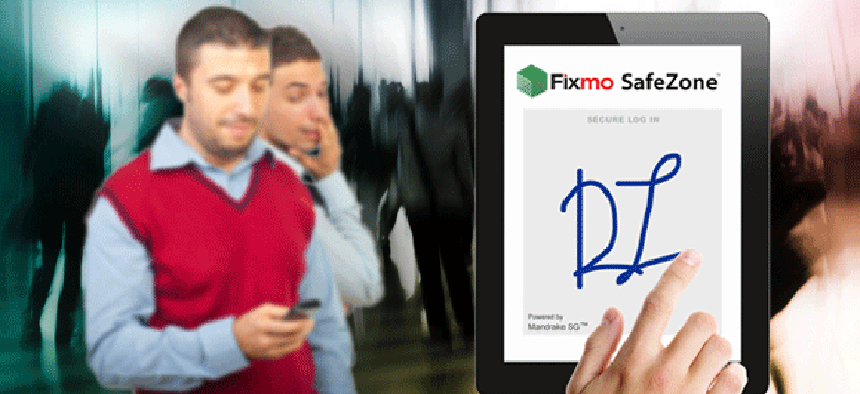Better than a password? Write with your finger.

For iOS and Android devices, Secure Gesture from Fixmo and Lockheed Martin lets users log in with a touch-screen gesture that can be almost impossible to duplicate.
A big part of any bring your own device strategy involves letting users access secure work data and apps from their personal mobile devices, something that often proves to be easier said than done.
As we have learned, over a third of mobile users don’t even use a simple password to protect their devices. They certainly wouldn’t want to have to memorize a long complex string of letters, numbers and special characters just to get access to it. Many network administrators have decided to use some sort of secure container for work-related activity, but users are still left with the hard-to-remember password. And passwords have the innate problem that someone looking over your shoulder can probably replicate it. Gaining access by “shoulder surfing” someone entering his password is an even greater potential problem on mobile devices, which are usually out in public where anyone can see what’s being typed.
At this point the IT department is looking for a compromise between increased security and usability. But why not have both? Secure Gesture from mobile security solutions firm Fixmo is not only easy to set up and use, but it is actually more secure than passwords.
Secure Gesture, which is powered by Lockheed Martin’s Mandrake Secure Gesture technology, replaces the password with a touch-screen gesture that the user creates, which could be signing their initials, drawing a symbol or anything the user can think of. It works with Apple iOS and Android devices.
A user can train the software in the unique gesture in under a minute. A series of tests ensures that the software recognizes the gesture and that the user performs the gesture consistently. For example, a gesture could consist of the user writing his initials and drawing a line under them from right to left. But if the line is draw from left to right, the log-in fails. Once the gesture is set consistently, the user can use it to enter the Fixmo SafeZone or another third-party secure container.
This protection is more secure than a password because the gesture is nearly impossible for another user to duplicate. Fixmo keeps track of not only the position of the finger as it traces the path but also the speed at which it is done. According to the company it is seven times as secure as a random 14-character alphanumeric password. And of course, it completely nullifies the danger of shoulder surfing.
Secure Gesture's unique biometric authentication could be what government agencies need to keep their work data safe on user-supplied commercial devices. To see it in action, check out this video.





